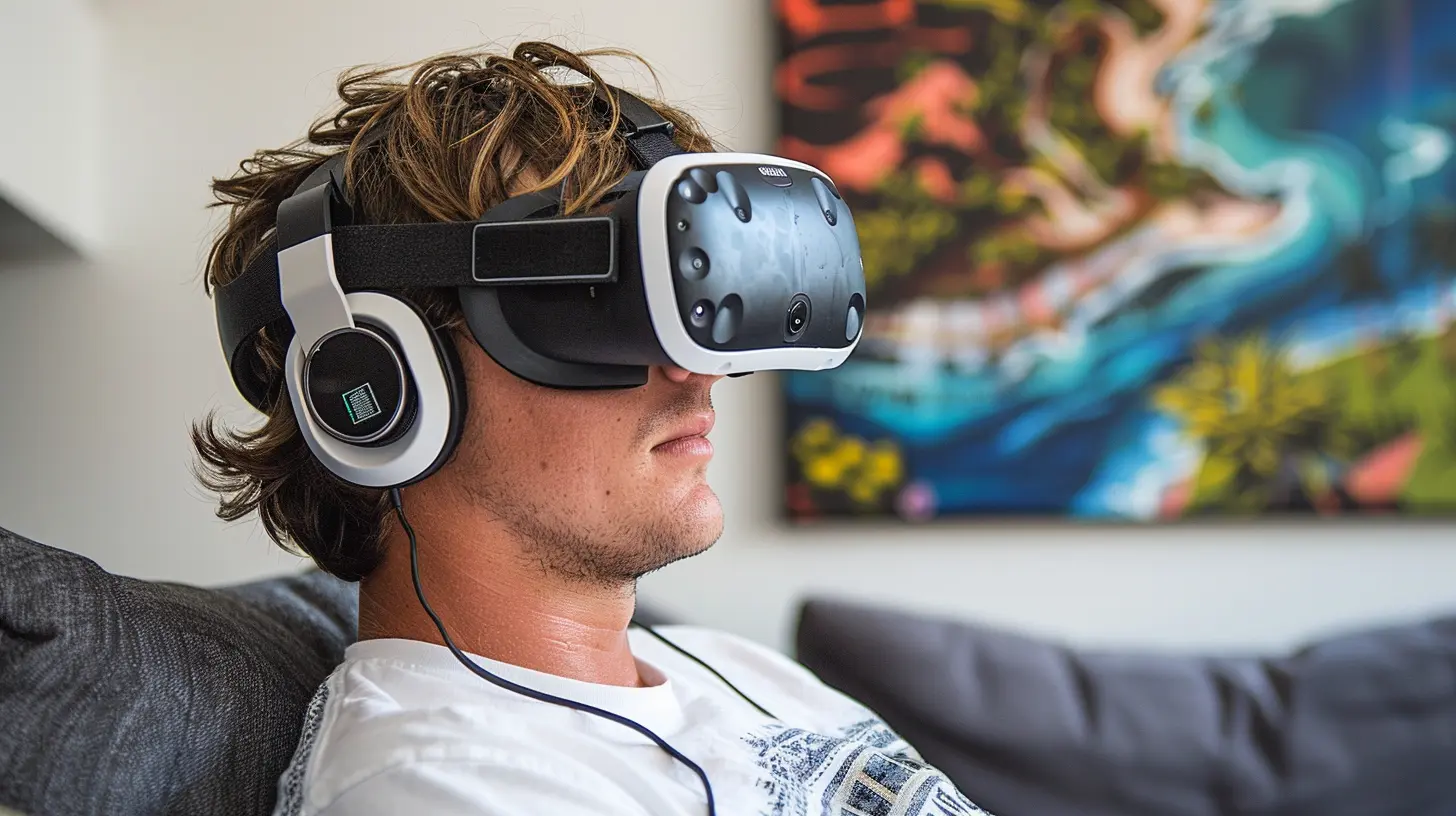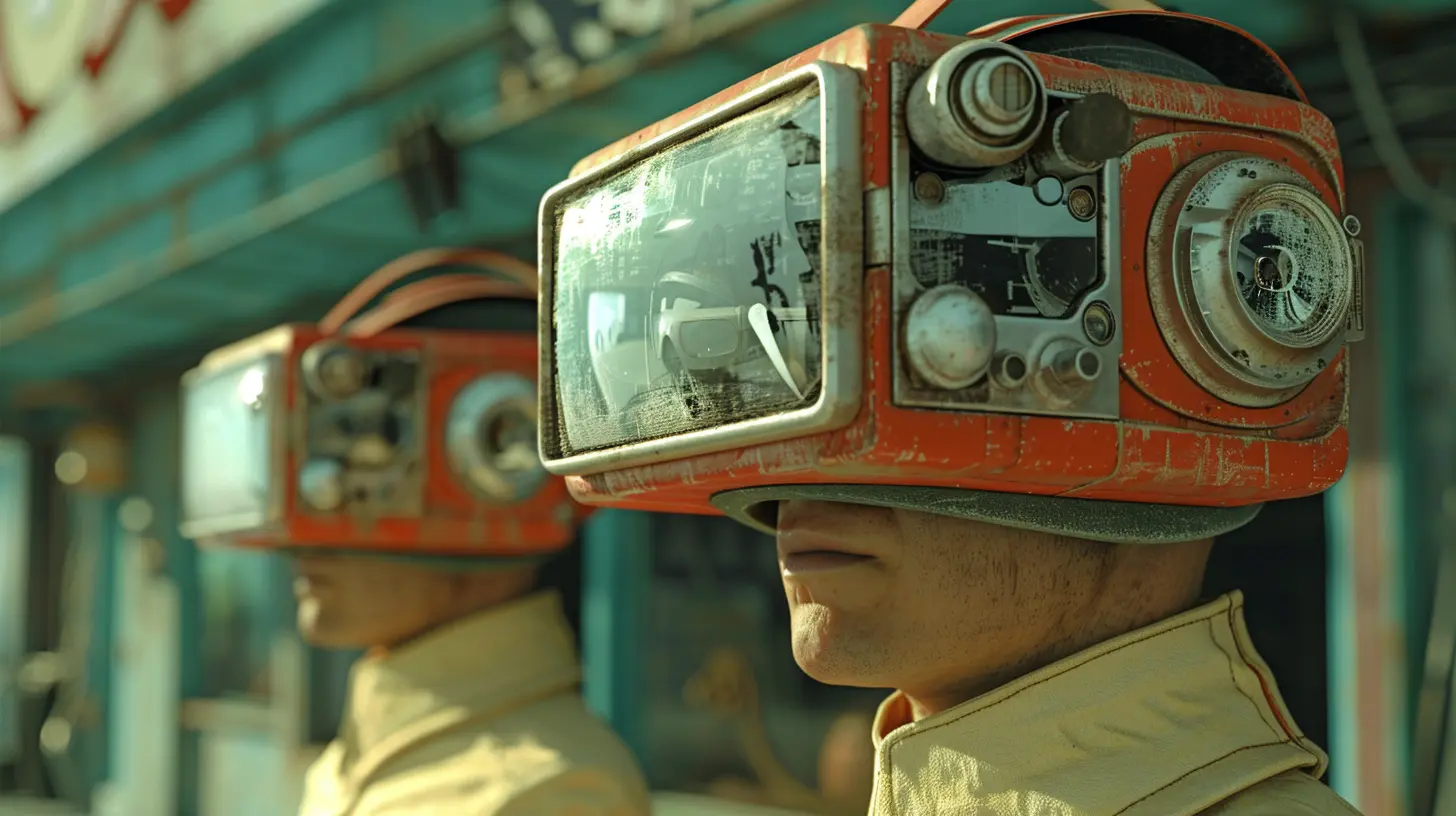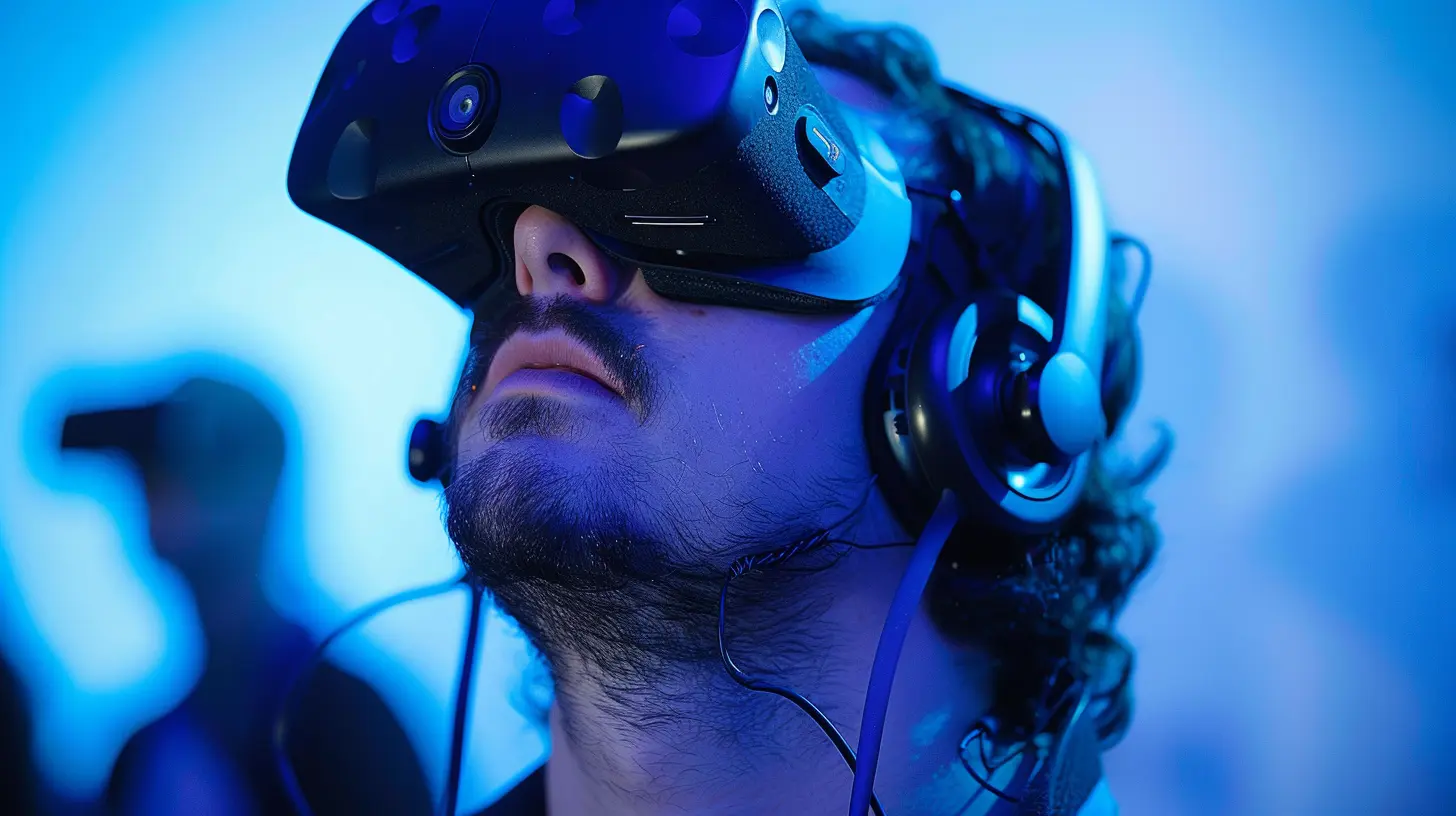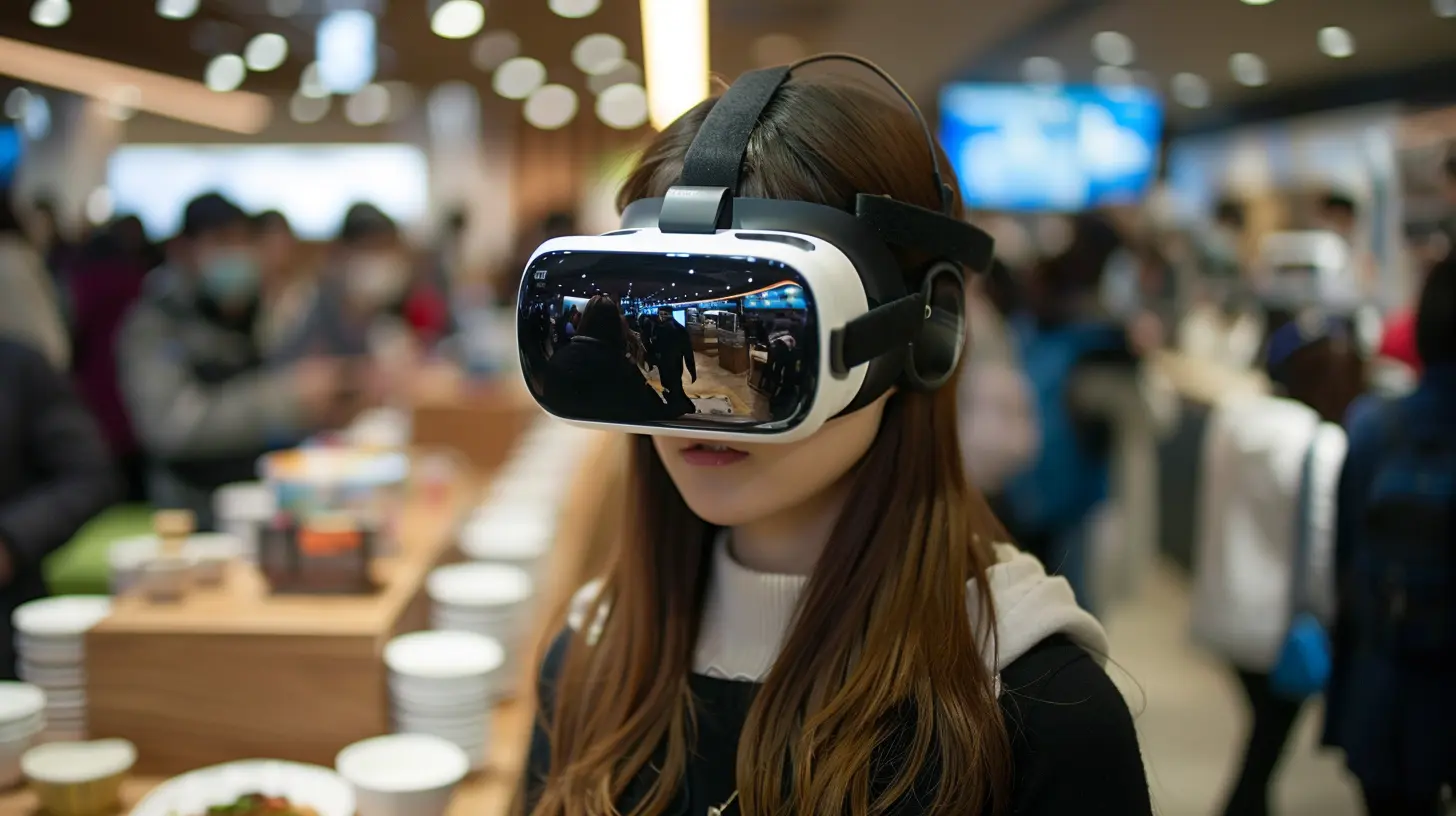The Science of Virtual Reality: How It Tricks Your Brain
5 October 2025
Virtual Reality (VR) is like stepping into an alternate universe—without actually leaving your couch. It’s not just about putting on a headset and playing games anymore. VR now taps into your senses in crazy ways, bending your brain’s perception of what’s real and what’s not. But how does it actually work? What’s the science behind those immersive worlds that make your heart race, your palms sweat, and your brain go, “Wait, is this real?”
Let’s dive into the fascinating world of VR and see how it messes with your mind—in the best way possible.
What Is Virtual Reality, Really?
Before we get into the juicy brain stuff, let’s clear up what Virtual Reality actually is. VR is a computer-generated environment that simulates a realistic experience. With the help of devices like headsets, gloves, and sometimes even treadmills, you're able to look around and interact with this 3D world as if you’re really there.The key here is immersion. The more realistic the environment feels, the trickier it becomes for your brain to tell the difference between virtual and actual reality.
Your Brain: The Ultimate Interpretation Machine
Your brain is like a highly advanced operating system. It takes in massive amounts of data from your eyes, ears, skin, and more, then processes all that info to create a sense of your surroundings. We call this multisensory integration.But here's the kicker—your brain is surprisingly easy to fool. It’s not perfect. If you feed it the right combination of visual, auditory, and sometimes haptic (touch) information, it starts to believe what it’s experiencing… even if it’s not real.
How VR Tricks Your Senses
1. Sight – The Most Powerful Sense in VR
Let’s be honest—your eyes do most of the heavy lifting in VR. A VR headset uses stereoscopic displays to present slightly different images to each eye, just like how your eyes work in real life. This creates depth perception, making the virtual world feel 3D.Ever tried standing on a cliff in VR? Your knees might go weak, even though you're really just on your living room floor. Why? Because your eyes send panic signals to your brain based on what they “see,” and your brain responds as if the danger were real.
2. Sound – The Invisible Immersion Booster
Audio in VR isn’t just background noise—it’s crucial. VR uses spatial or 3D sound to mimic real-world audio cues. This means you can hear exactly where a sound is coming from—a bird chirping to your left, footsteps behind you, or an enemy sneaking up.Your brain uses these sound cues to map out space, just like bats with echolocation (okay, maybe not exactly like bats, but close enough). When what you hear matches what you see, the illusion becomes that much stronger.
3. Touch – The Underrated Game-Changer
Enter haptics. These are the vibrations or pressures you feel in VR using controllers or gloves. They simulate touch—like feeling a gun recoil, the splash of water, or even the tension of pulling a bowstring.Now, touch doesn’t always get the spotlight, but when it’s well-done, it significantly boosts realism. The slightest vibration timed perfectly with an action makes your brain go: “Yep, seems legit.”
Presence: When Your Brain Thinks Virtual Is Real
There’s a term in VR science called “presence.” It’s that magical moment when your brain fully accepts the virtual world as reality. You're no longer just watching a simulation—you’re inside it.So, what makes presence possible? It’s a combo of several tricks:
- Low latency: The VR system reacts instantly as you move your head or body.
- High frame rate: Smooth visuals keep your brain engaged.
- Accurate tracking: Your virtual hands and feet match your real-world movements.
When everything aligns just right, your brain stops questioning the illusion. You feel like you're actually there.
The Brain's Predictive Nature: Why VR Works So Well
Let’s geek out for a sec—your brain is a prediction machine. It constantly guesses what’s about to happen next. That’s how you’re able to catch a ball or walk without tripping every two steps.VR developers take advantage of this by designing experiences that follow real-world physics and logic. When everything in VR behaves the way your brain expects it to, it reinforces the illusion.
Here’s a fun example: If you throw a ball in VR and it arcs and bounces like a real one would, your brain accepts that as truth. But if it floats or glitches out mid-air, the spell’s broken. Your brain goes, “nah, that’s fake,” and totally checks out.
Motion Sickness: When Your Brain Gets Confused
Let’s talk about the not-so-fun part of VR: motion sickness.Ever felt dizzy after a VR roller coaster ride? That happens when there’s a disconnect between what your eyes see and what your body feels. You're whizzing through the air in VR—but your inner ear (which controls balance) says you're sitting still. Your brain gets this jumbled input and thinks, “Uh-oh, must be poison,” and initiates nausea as a defense mechanism.
Gross, right? But it's actually a brilliant survival trait from your ancestors. Fortunately, as VR tech improves, this is becoming less of an issue.
Neuroplasticity: Can VR Rewire Your Brain?
Here’s where it gets really wild. Your brain isn’t set in stone—it’s constantly changing based on experience. This is called neuroplasticity.And guess what? VR taps into this in powerful ways. Therapists are using VR to treat PTSD, phobias, and even chronic pain. Gamers unknowingly train reflexes, strategy, and spatial awareness. It’s not just play—it’s potential brain training.
The Brain’s “Mirror Effect” in VR
Humans are super empathetic creatures. Thanks to something called mirror neurons, we tend to imitate what we see and feel what others feel. That’s why you cringe when you see someone fall or get emotional during a sad movie.In VR, this effect is dialed up to eleven. When you become a character or see the world through someone else’s eyes, your brain starts to identify with that experience. This is why VR storytelling feels so personal—and sometimes even life-changing.
The Future of Brain-VR Connection
We’re only scratching the surface. Imagine VR connected directly to your brain—no headset required. It sounds sci-fi, but companies like Neuralink are already exploring brain-computer interfaces.One day, VR might not just trick your senses—it might be your senses.
So, Why Does This All Matter?
Understanding how Virtual Reality hijacks your perception doesn’t just make you appreciate the tech more—it shows how incredibly adaptable your brain is. Sure, VR can transport you into epic fantasy worlds or intense sci-fi battles, but it can also help you face fears, connect with others, and see the world from perspectives you never knew existed.And that’s the real magic behind the science.
Final Thoughts
Virtual Reality isn’t just a gimmick or gaming trend—it’s a neurological playground where science and imagination collide. By understanding the way VR affects your brain, you don’t just become a better gamer or developer—you become a more conscious participant in this digital evolution.So the next time you strap on a headset and your brain starts freaking out over a virtual cliff or high-speed chase, just smile. Because now, you know the science behind the magic.
all images in this post were generated using AI tools
Category:
Virtual RealityAuthor:

Brianna Reyes
Discussion
rate this article
1 comments
Inez McFadden
Virtual reality redefines boundaries, immersing us in worlds beyond imagination—unlocking endless possibilities for our minds!
October 5, 2025 at 3:22 PM

Brianna Reyes
Thank you! Virtual reality indeed opens up remarkable new dimensions for exploration and creativity, challenging our perceptions and expanding our mental horizons.


